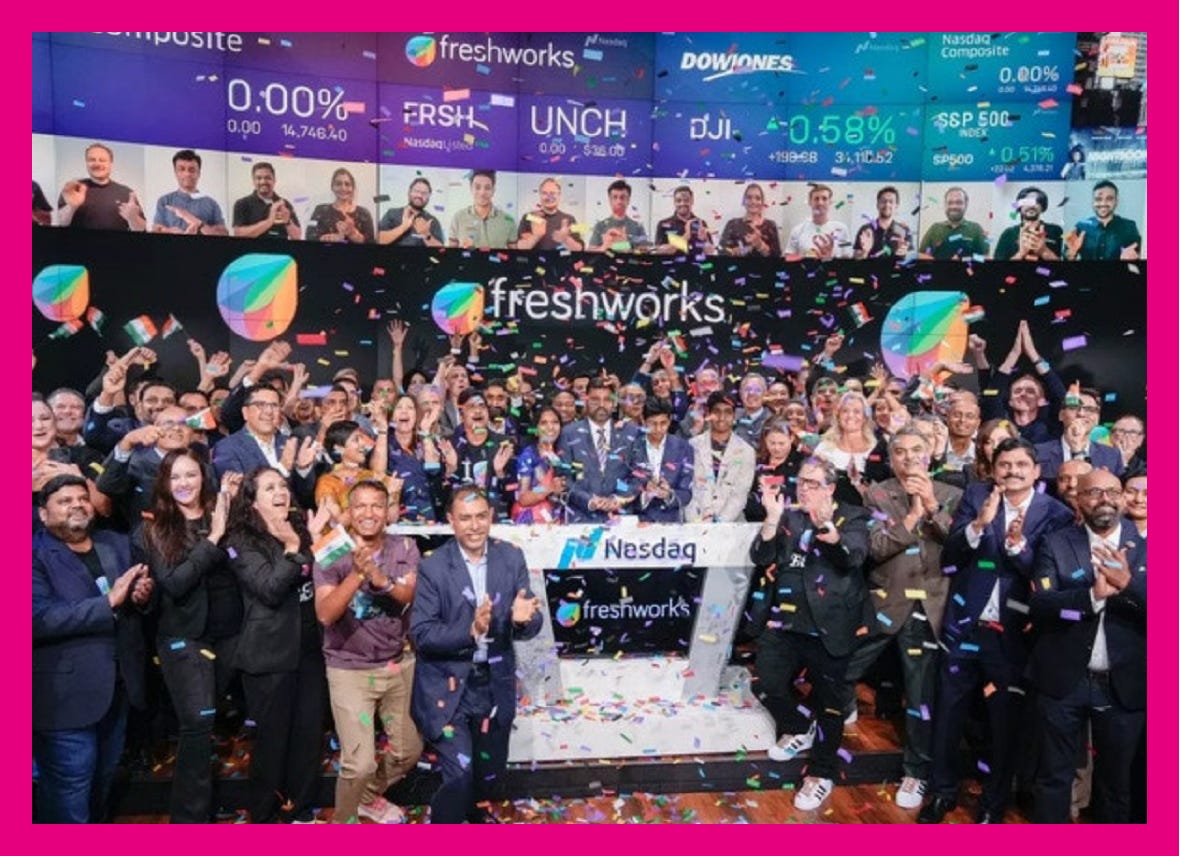January by D’Ornano + Co.: what are our 7 predictions for European Tech in 2022, why Freshworks is succeeding, and what implications does the current turmoil have on valuation of private companies?
This is our monthly newsletter dedicated to Tech x Investments.
European Tech is hot. Very hot. The European startup ecosystem just experienced the most extraordinary year in its history with a record amount of $93.3 billion of fundraising (compared to $38.5 billion in 2020). Years of wondering when the region’s entrepreneurs would get global respect were washed away by a tidal wave of investments, a significant part of those arising from US based investors and/or non traditional players in the VC game.
In this context, European founders and investors must recognize the underlying trends that are reshaping the ecosystem. Bigger rounds, more money, and increased attention bring greater responsibility and expectations, and the need to have the right playbook for growth.
As public valuations are hit, the question of private market valuations is again at the center of the table. We think the fundamentals of a continuing growth of the ecosystem are here to stay. However, as investors invest in European champions, the fundamental traits of the business model and the relevant unit economics and legal risks shall be carefully assessed to avoid costly mistakes.
Here are 7 predictions for 2022 intended to offer some insight into the road ahead so that founders can attain those still lofty valuations that are making the headlines, while investors make the right investment decisions as regards to European Tech companies.
This month’s spotlight is on Freshworks
Freshworks (the “Company”) became the first Indian SaaS company to list on Nasdaq on 22 September, 2021. Its initial public offering of 28,500,000 shares at $34 per share raised over $1 billion, scaling its market valuation to $10 billion.
With over $400m in Annual Recurring Revenue (“ARR”) and over 4.000 employees worldwide, the Company has raised rounds every year since 2011 and has been backed by the world’s most renowned investors, including Sequoia, Accel, CapitalG etc. With this latter, the Company has probably benefited from a “Google factor”, playing a big part in building a successful go-to-market playbook – see below;
Here are some insights on the Company and considerations on its business model and key unit economics;
Founded over a decade ago by Girish Mathrubootham and Shan Krishnasamy, both former employees of Zoho Corp, the Company provides a Software as a Service (SaaS) platform to over 50.000 end customers that enables small and medium-sized businesses to support customers through e-mail, phone, website, and social networks. As such, the Company faces competition from Zoho Corp. as well as from the biggest US players in this industry, such as Salesforce or more traditional incumbents like Oracle or SAP;
Functions are covered across three main product lines: Freshdesk for Customer Experience (CE), Freshservice for IT service management (ITSM) and Freshsales for Customer Relationship Management (CRM). The S-1 does not provide a detailed view per product line;
The Company plays an SMB (i.e. small and medium businesses) playbook, with SMBs accounting for c.80% of the Company’s client base at Dec.21, while Mid-Market (c.17%) and Enterprise (c.3%) were more marginal. Per the S-1, the Company defines an SMB client as an organization with less than 250 employees, while a Mid-Market customer refers to an organization with less than 5.000 employees. Through this breakdown, we are unable to see the weight of organizations having more than 1.000 employees, which could help reassess the total weight of true SMB and Enterprise customers as per SaaS standards, mixed in the “Mid-Market” segment. Also, it would be interesting to challenge the customer breakdown by introducing in the customer breakdown a reference to Annual Contract Value (“ACV”);
Today, the majority of sales are driven by the inbound channel, from the SMB to the Enterprise segment. We understand from the S-1 that the Company’s challenge is to expand its partner network, which remains marginal at Dec.-21;
The Company’s pricing model is vanilla, with a user-based pricing based on the number of users the customers enable as « agents ». Per the S-1, the Company is at risk as regards to a potential overstatement of users at booking, implying potential downsell for the forward periods;
The Company has the typical metrics of a SaaS company, with a constant growth margin of 79% over 2019-2020 and over 95% of its revenue coming from subscriptions;
Here the dynamics in terms of recurring revenue are interesting and allow for the Company to stand-out from the crowd: the Company’s expanding product suite seems to have positively impacted its net dollar retention (of 147% in 2020!), meaning that the Company’s growth is mostly fuelled by expanding revenue from its existing customer base. Per its S-1 filing, Freshworks’ 53% revenue growth rate in the first half of 2021 was 38% driven by new customers (20% of its 53% growth rate), while 62% (33% of its 53% growth rate) “was attributable to revenue from existing customers as of June 30, 2020”;
In addition to its organic growth, the Company plans to develop a M&A playbook. To date, it has already acquired 13 companies to date including AnswerI1Q, Flint, CanvasFlip, Natero, and Zarget, among others.
While major stock indexes, including the tech-heavy Nasdaq, remain well below 2021's high and face the prospect of further corrections, there is an increasing disconnect between private and public valuations. So, are some of our European Tech Unicorns overvalued?
As the SEC says there’s “absolutely no visibility” for investors when it comes to unicorns, and is currently working on a set of disclosures for these companies, this article explores the market for data and information on private companies and reflects on how the entry of non-traditional investors in the VC game has allowed for more data on these companies, notably through the rise of secondary transactions.
FinTech accounted for 21% of all venture capital funding in 2021, and companies like Klarna, Revolut and now Checkout are some of Europe’s most valuable companies. In this article, David Armano, Forbes Contributor, explores the future of the payment industry that is yet to be further disrupted.
Last week, the former unicorn filed for bankruptcy protection : beyond shaking up the IoT sector and pointing out the pitfalls of these models, this analysis allows us to know more about the risk factors that could bring down today's unicorns.
Our founder Raphaelle d'Ornano sheds light on the invasion of non-traditional investors into the startup funding scene and the race to a $100B European scale-up. To read more 👇
PlanRadar
D'Ornano + Co. has provided Quadrille Capital and its co-lead Insight Partners with its expertise for the Austrian Startup PlanRadar’s €60m Series B. This funding roll follows the impressive Serie A led by Insight Partners in March 2020 to digitize construction and real estate.
ADIT
D'Ornano + Co. has been delighted to provide its expertise to Sagard in its €325m LBO operation in the leading business intelligence agency ADIT.
La Belle Vie
Our firm D'Ornano + Co. is proud to have accompanied Left Lane Capital alongside Quadrille Capital on both financial and legal due diligence in the Series B of the rapidly-expanding Labellevie.com.
You like what you've read? Tell and share with your friends!
Newsletter powered by D’Ornano + Co.








